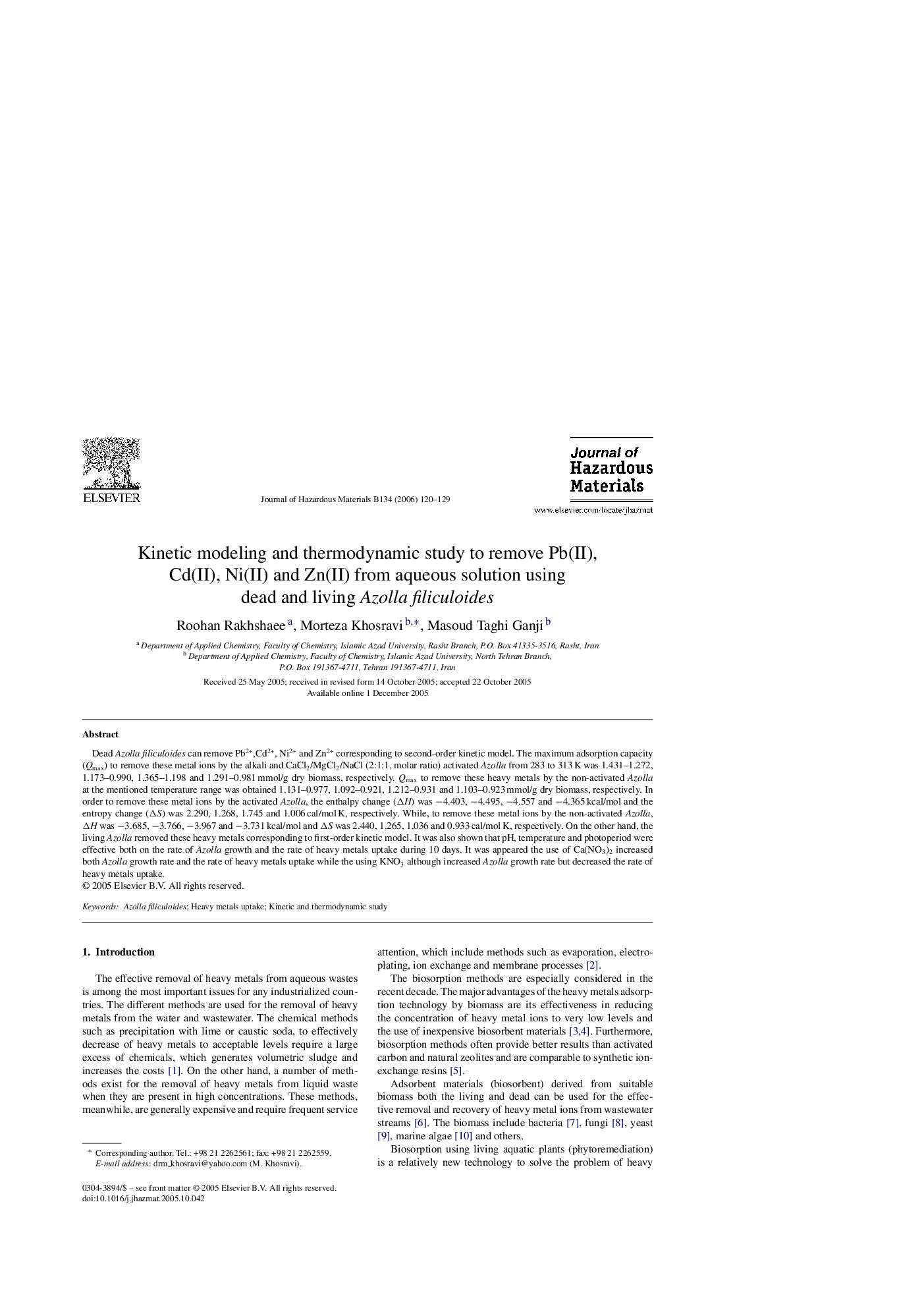| Article ID | Journal | Published Year | Pages | File Type |
|---|---|---|---|---|
| 585255 | Journal of Hazardous Materials | 2006 | 10 Pages |
Abstract
Dead Azolla filiculoides can remove Pb2+,Cd2+, Ni2+ and Zn2+ corresponding to second-order kinetic model. The maximum adsorption capacity (Qmax) to remove these metal ions by the alkali and CaCl2/MgCl2/NaCl (2:1:1, molar ratio) activated Azolla from 283 to 313 K was 1.431-1.272, 1.173-0.990, 1.365-1.198 and 1.291-0.981 mmol/g dry biomass, respectively. Qmax to remove these heavy metals by the non-activated Azolla at the mentioned temperature range was obtained 1.131-0.977, 1.092-0.921, 1.212-0.931 and 1.103-0.923 mmol/g dry biomass, respectively. In order to remove these metal ions by the activated Azolla, the enthalpy change (ÎH) was â4.403, â4.495, â4.557 and â4.365 kcal/mol and the entropy change (ÎS) was 2.290, 1.268, 1.745 and 1.006 cal/mol K, respectively. While, to remove these metal ions by the non-activated Azolla, ÎH was â3.685, â3.766, â3.967 and â3.731 kcal/mol and ÎS was 2.440, 1.265, 1.036 and 0.933 cal/mol K, respectively. On the other hand, the living Azolla removed these heavy metals corresponding to first-order kinetic model. It was also shown that pH, temperature and photoperiod were effective both on the rate of Azolla growth and the rate of heavy metals uptake during 10 days. It was appeared the use of Ca(NO3)2 increased both Azolla growth rate and the rate of heavy metals uptake while the using KNO3 although increased Azolla growth rate but decreased the rate of heavy metals uptake.
Related Topics
Physical Sciences and Engineering
Chemical Engineering
Chemical Health and Safety
Authors
Roohan Rakhshaee, Morteza Khosravi, Masoud Taghi Ganji,
